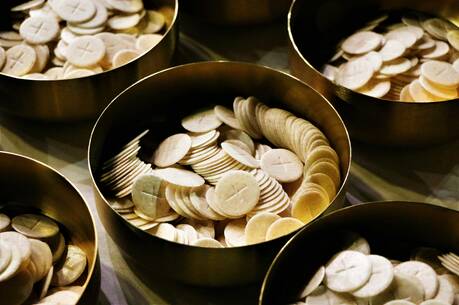People, Not Plants
The parable of the weeds among the wheat is found only in Matthew, and it is an eschatological parable, a parable about the Final Judgment. For gardeners, it evokes memories of hours in the garden, distinguishing between weeds and desirable plants, which is harder to do than one might think, at least for novice gardeners. It raises another question: What constitutes a weed?
After my family bought an old house over 10 years ago, we moved in the spring, and I noticed that there was rhubarb growing in the garden. As the rhubarb grew into summer, I realized that my plant no longer looked like rhubarb. It was something else; it was burdock, arctium lappa. It has long white roots, over a meter long when fully grown, and I found that I could not eradicate it. The roots always snapped before I could dig it out completely.
I found out something else interesting about arctium lappa. Some people eat the roots and use other parts of the plant for medicine. It was also the plant whose clinging flowers led to the development of Velcro, since they stick to animal fur and are difficult to disentangle once attached. That it was a weed to me and my garden did not mean it was a weed to everyone. Distinguishing between a weed and a useful plant depends upon what you are trying to grow.
In Jesus’ parable of the wheat and the weeds, it does seem that there is a clear distinction made between the wheat, which produces the stuff of life, bread, and the weed, zizania in Greek, known scientifically as the species lolium temulentum and as “tares” or “darnel” in older translations of the Bible. Zizania looks a lot like wheat as it begins to grow and it is not until much later in its development that it can be distinguished from wheat.
Jesus’ parable makes it clear that the zizania do not ultimately have a good purpose or good end, unlike the burdock, but that once the farmer finally determines what it is, it will be destroyed. What is clear, however, is that the determination as to what is zizania and what is wheat will wait until the eschaton, when the reapers, the angels, gather the wheat and the weeds and so determine their final judgment.
Sometimes students ask whether this parable indicates predestination, whether some people are weeds and other people are wheat from the beginning, but this pushes too hard against the metaphoric quality of parables. Plants are plants and people are people. The point of Jesus’ parable is not that some people are made evil from the beginning, in their roots, but that the church is a corpus mixtum of sinners and saints. It is impossible to know who represents the wheat and who represents the weeds, and human attempts to judge someone a “weed” in advance of God’s judgment are bound to fail because of the partial nature of our knowledge and decisions.
It seems that in this parable the church is being cautioned to patience and tolerance with those whom we are just aching to condemn. All of us are in fact a corpus mixtum, created good but with proclivities to our own peculiar sins. None of us are wheat without God’s help, and the improper rush to create a pure church, excluding those who do not sin the same way we do, or not think like us, is bound to fail. We must patiently allow God to work in us as we prepare for the end of the age.
Matthew is not shy of Judgment, with a capital J, for the interpretation of the parable promises that for some “there will be weeping and gnashing of teeth” and conversely that “the righteous will shine like the sun in the kingdom of their Father.” While the church retains authority to judge behaviors and, as expressed in Matthew 18, who may remain in communion with the church, ultimately without complete knowledge we cannot say for certain who is wheat and who is weed. In fact, at this point, we ought to insist strongly again that a metaphor is a metaphor. We are not plants; we are people. And unlike a plant, which is what it is, we can grow to be who God intended us to be, to serve the kingdom with fruitfulness we never knew we had inside of us.
This article also appeared in print, under the headline “People, Not Plants,” in the July 7-14, 2014, issue.







